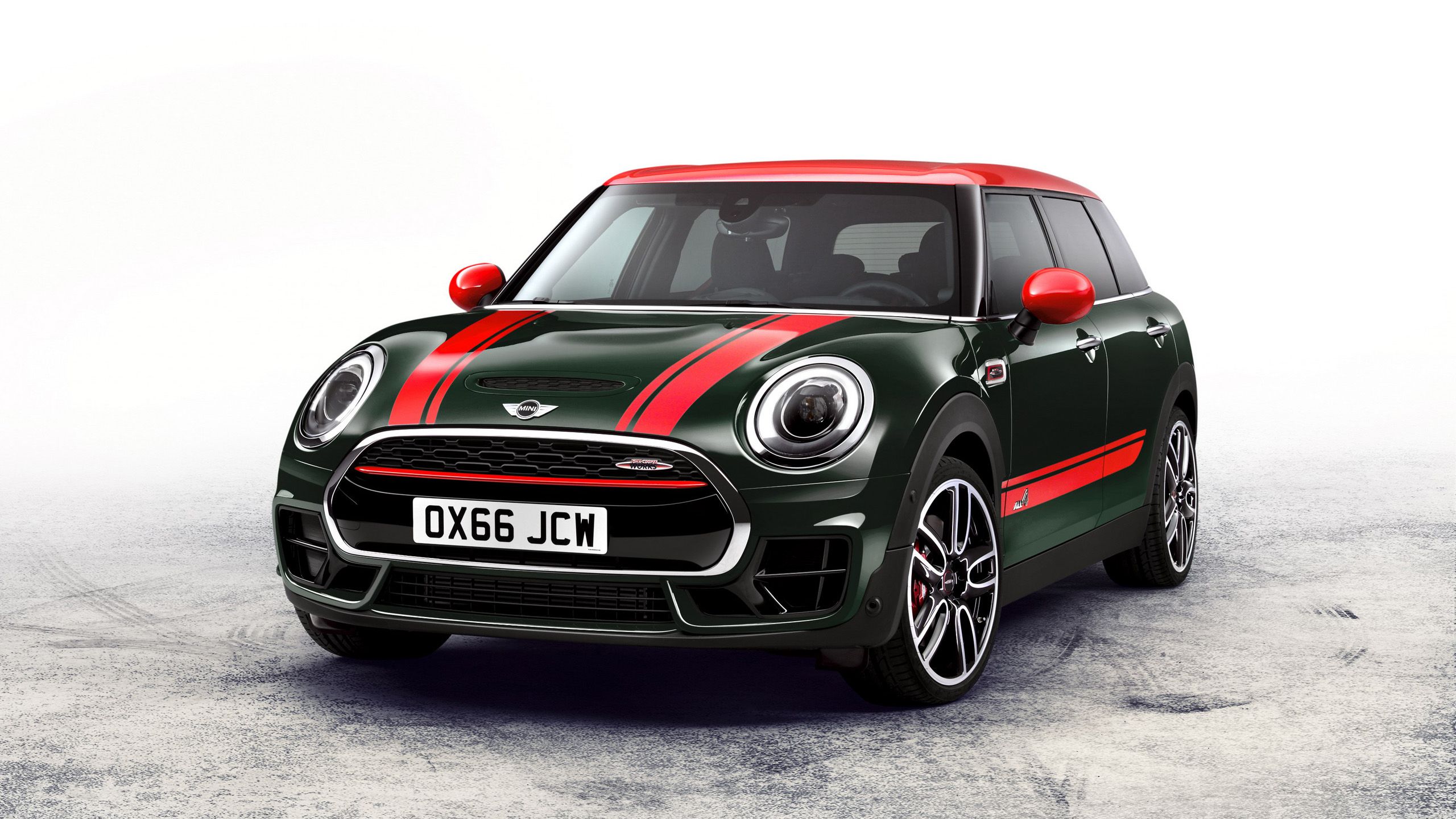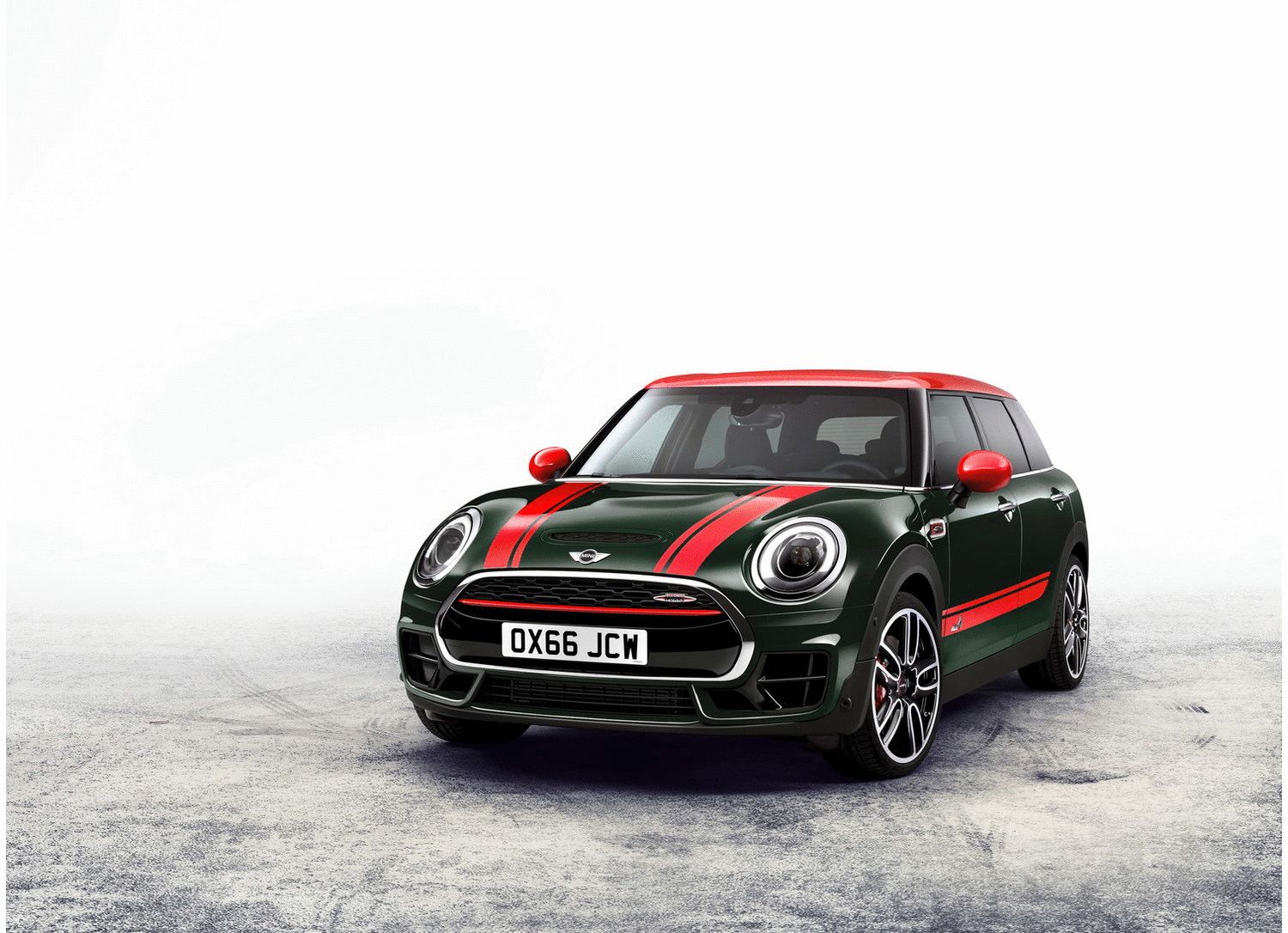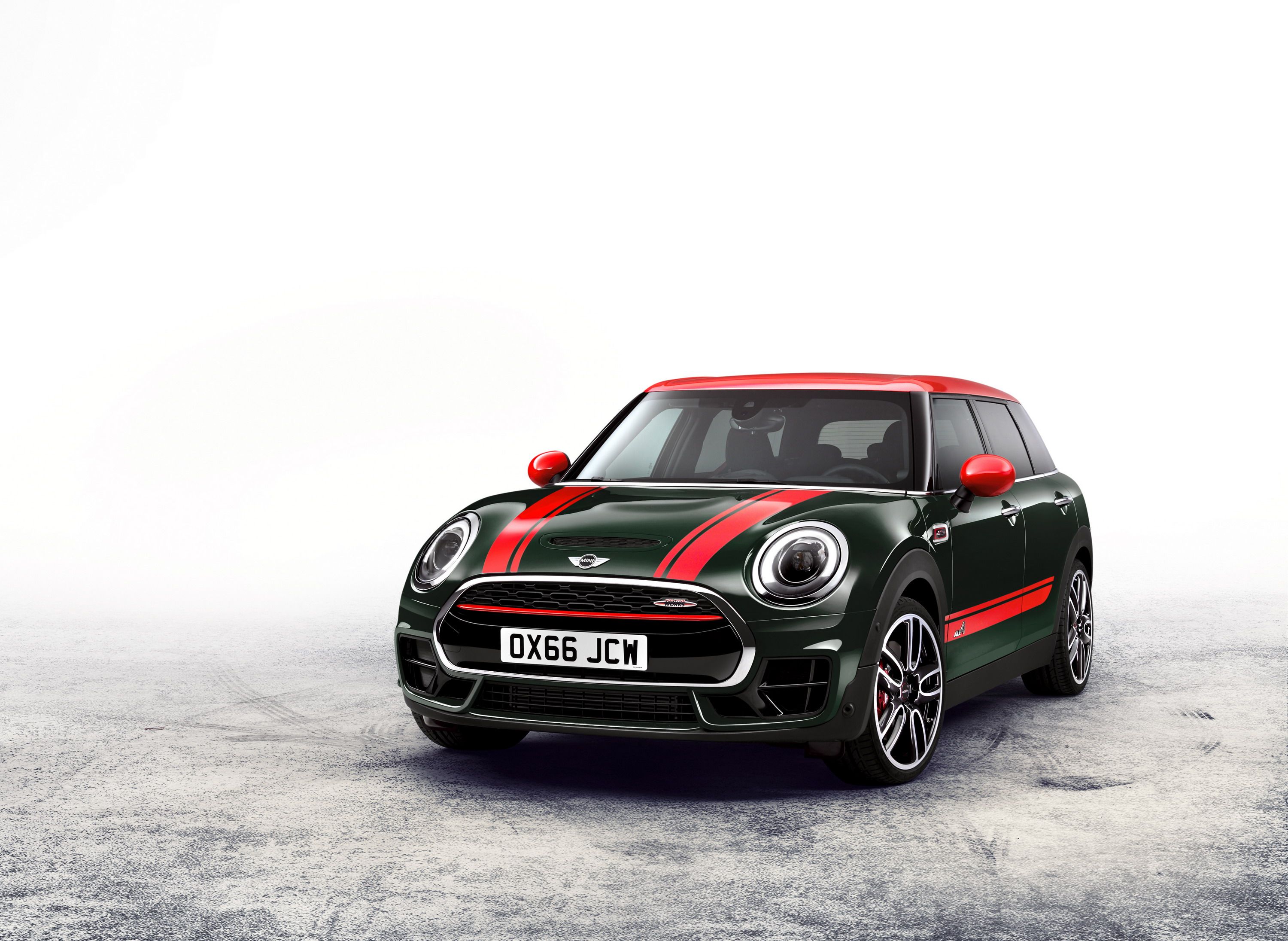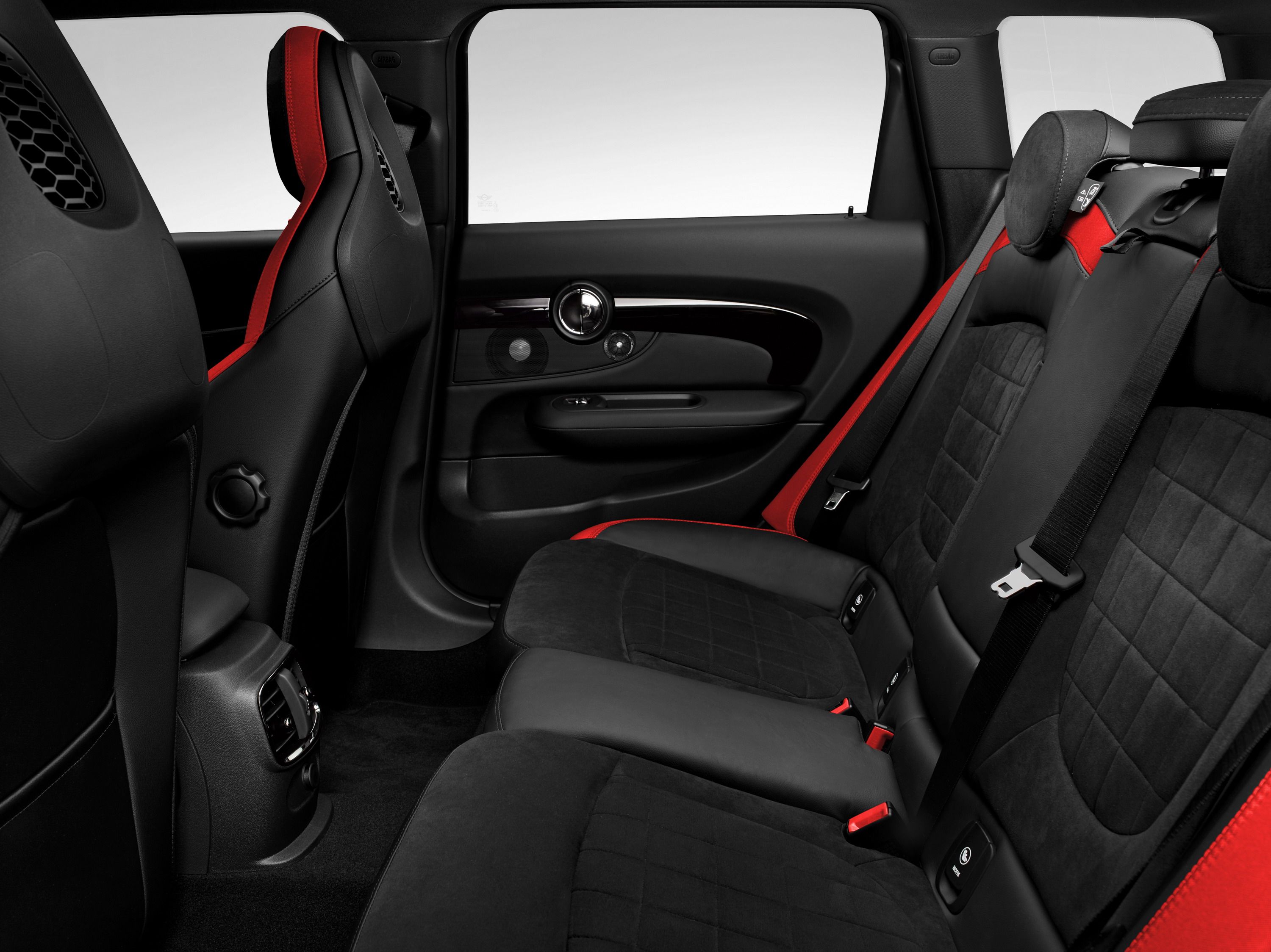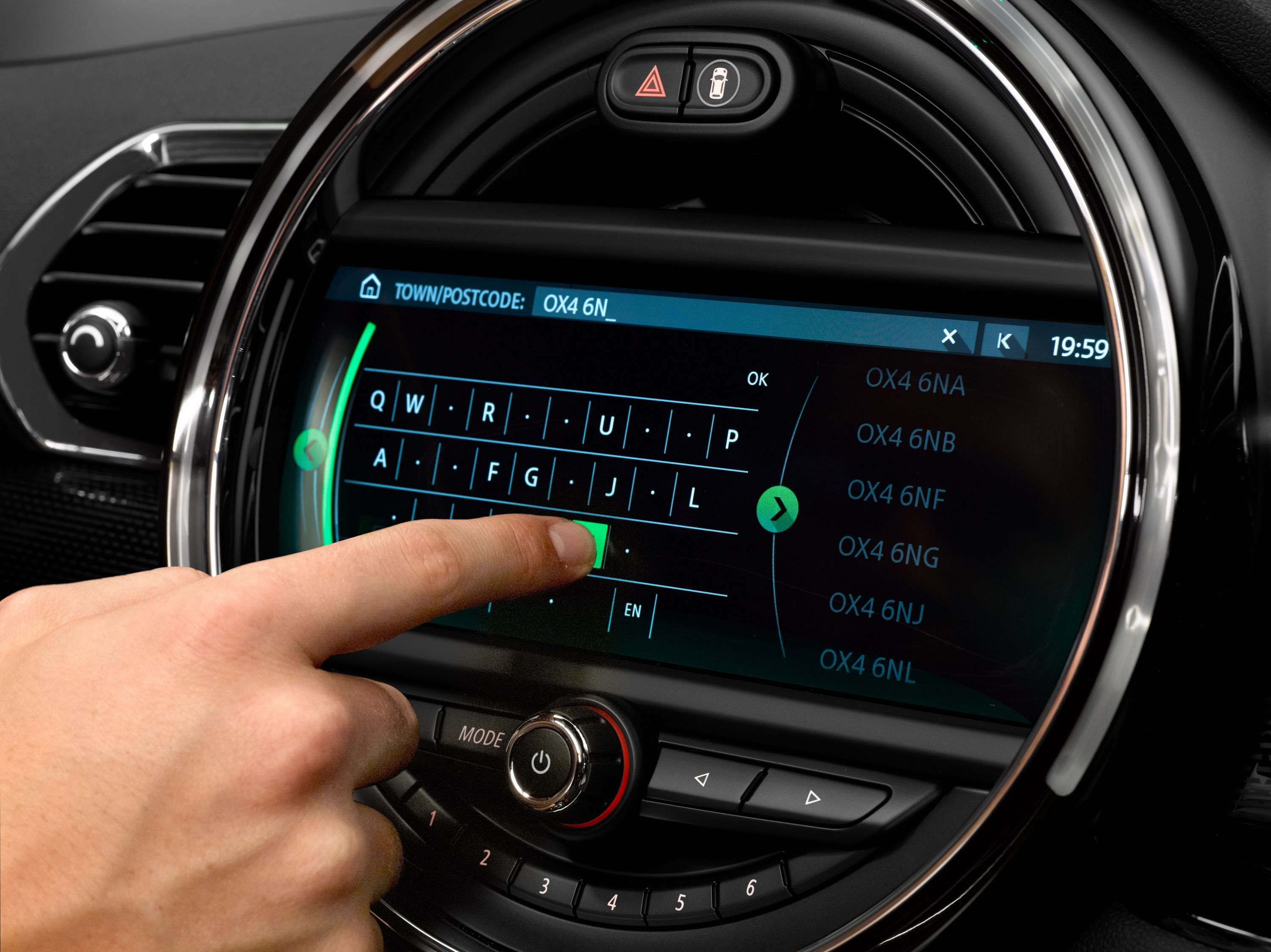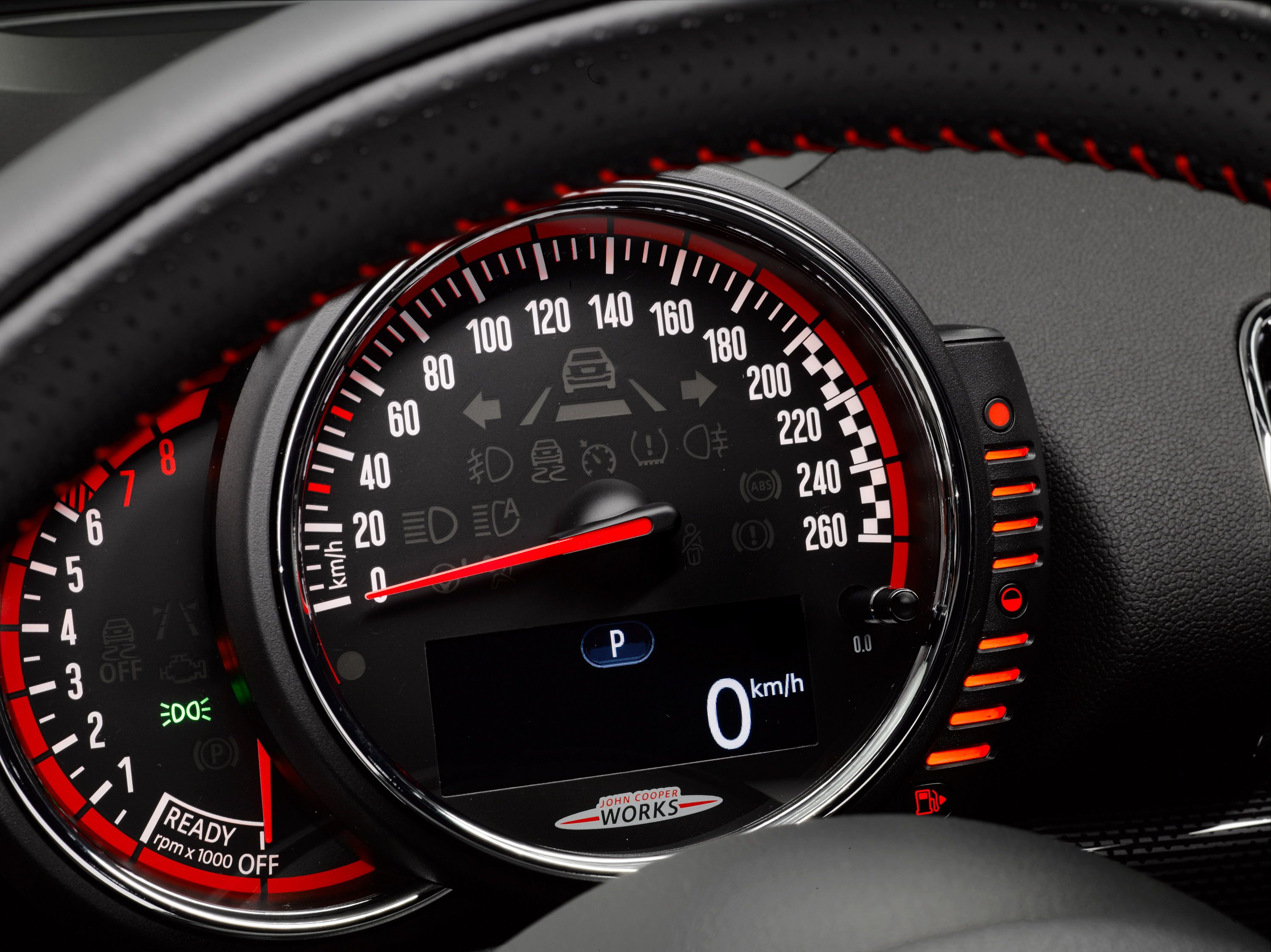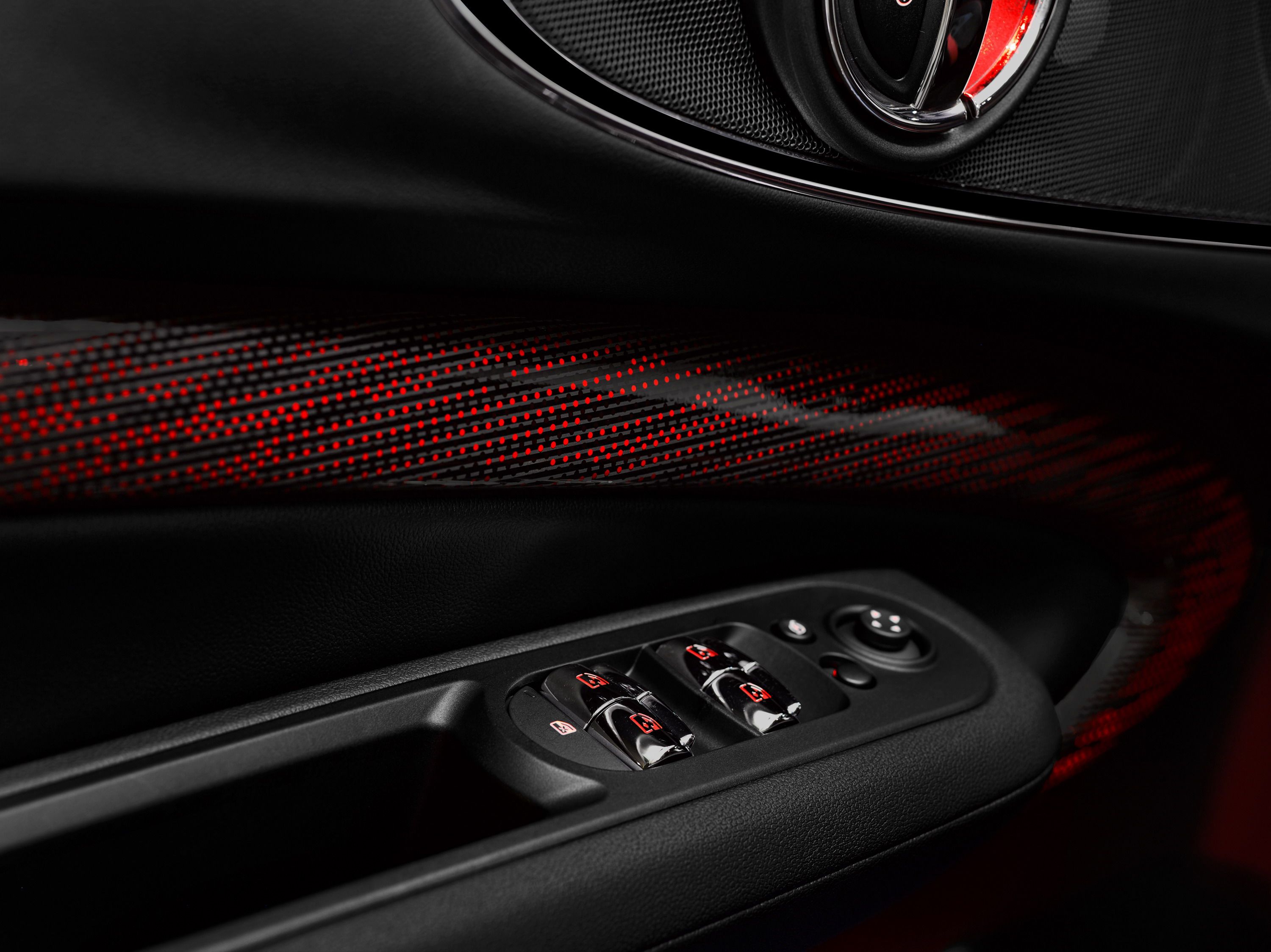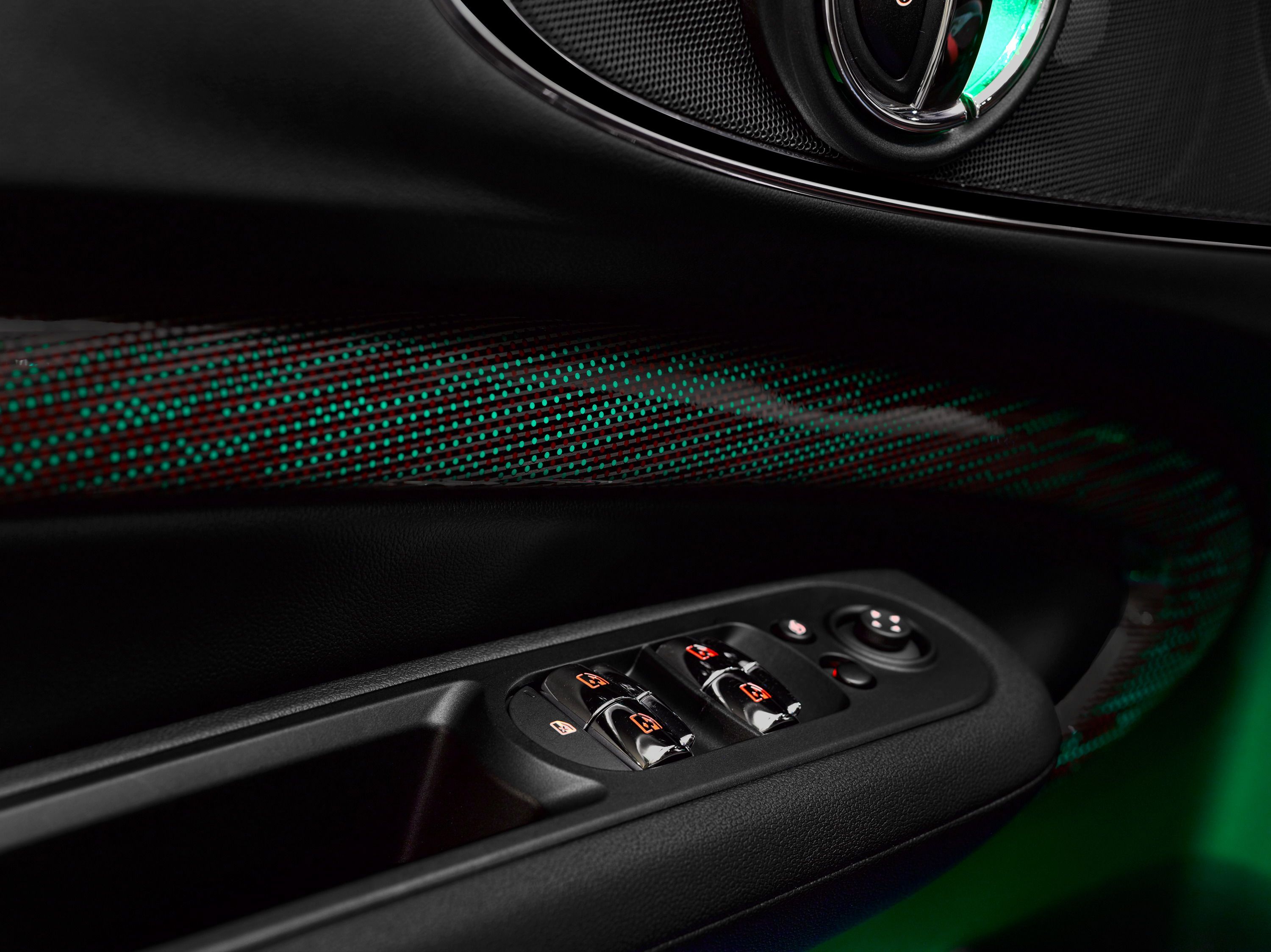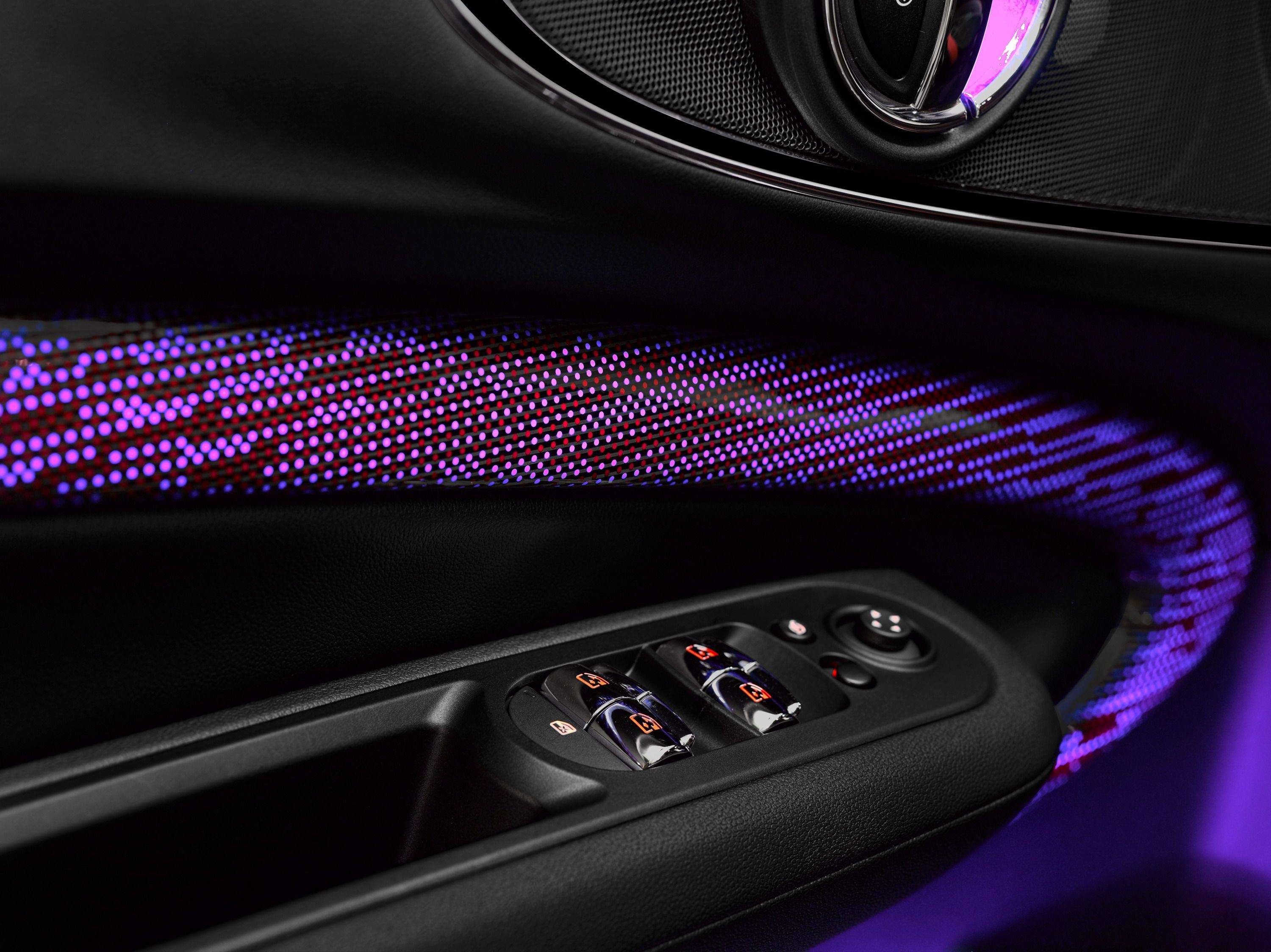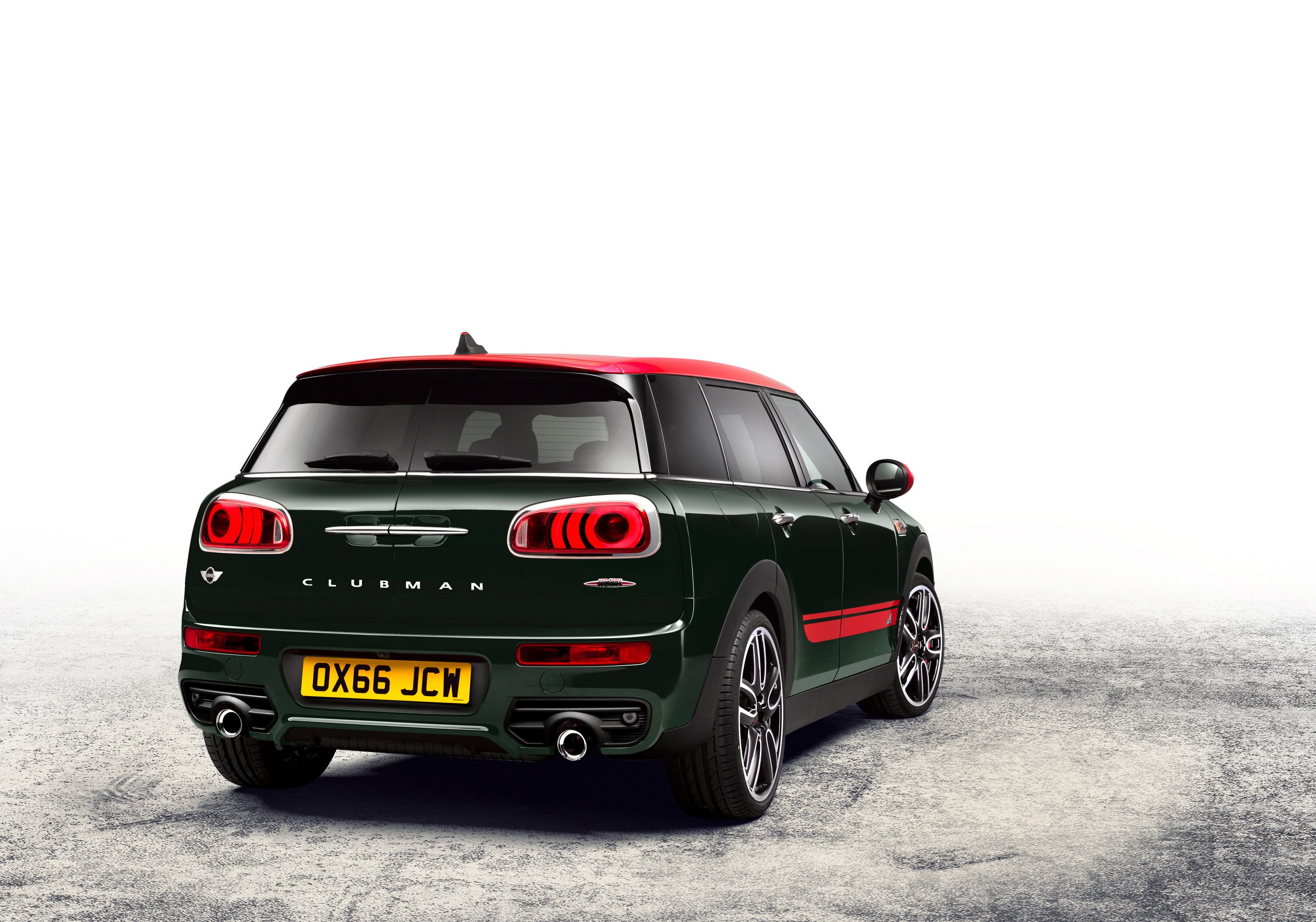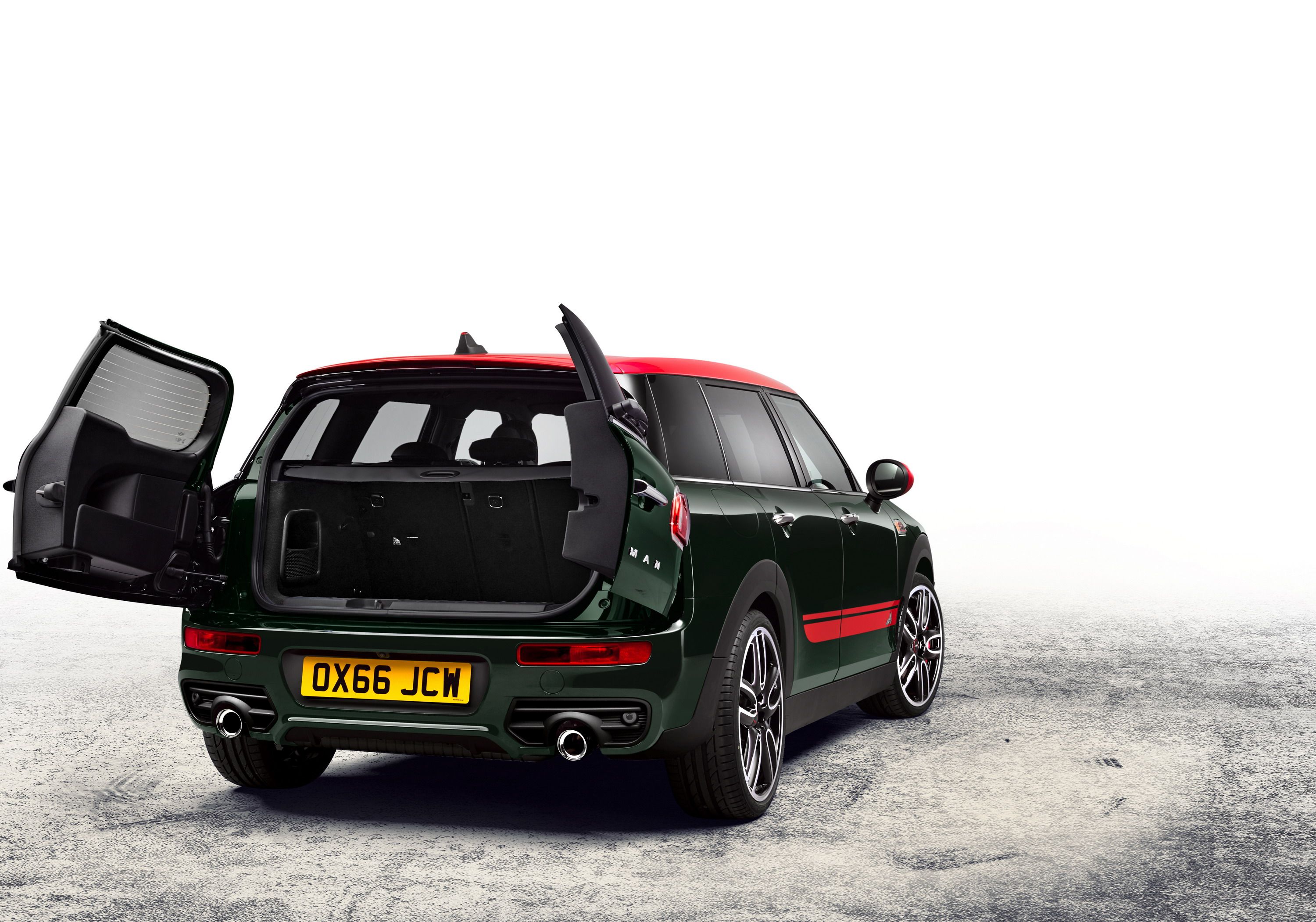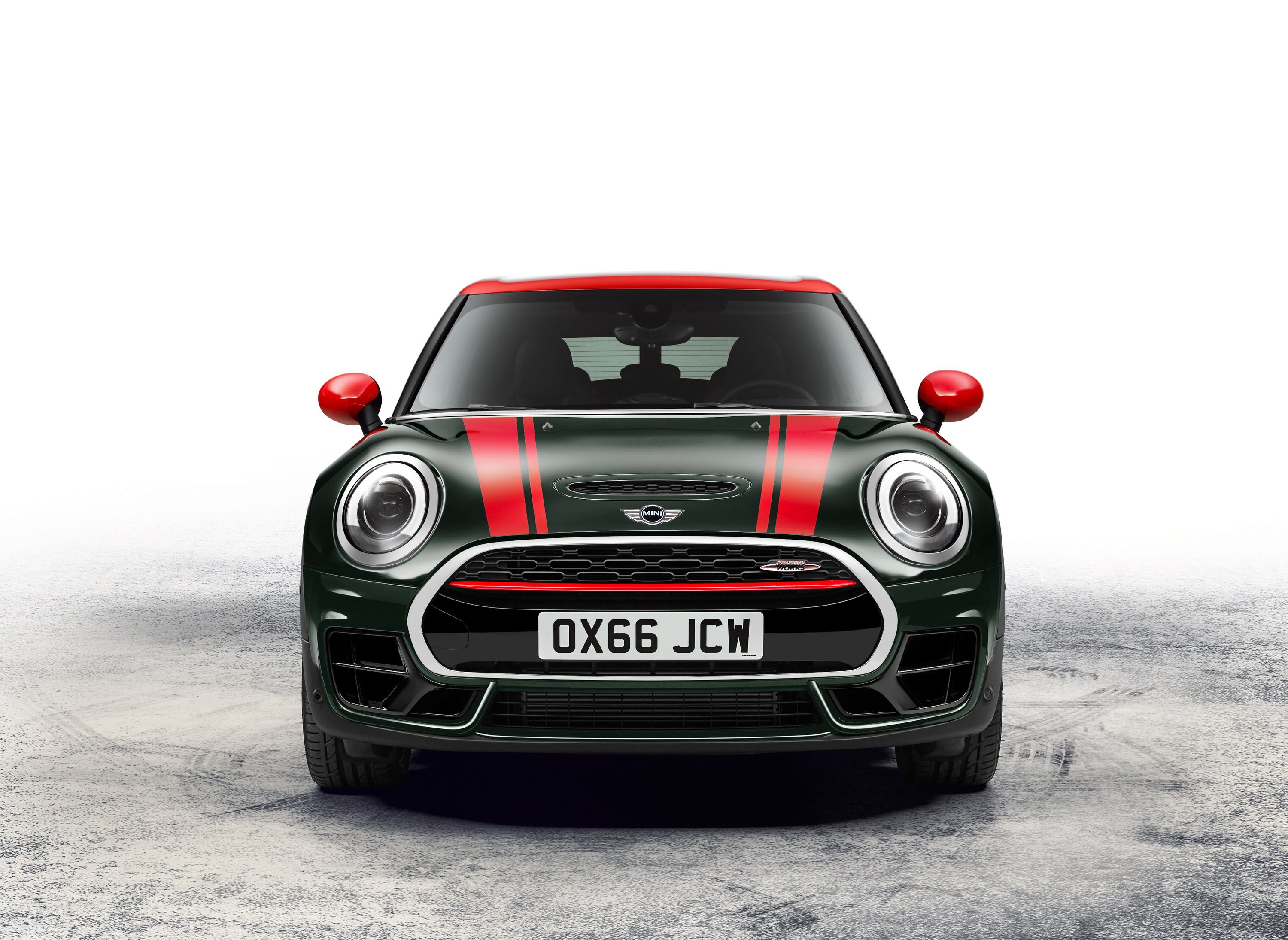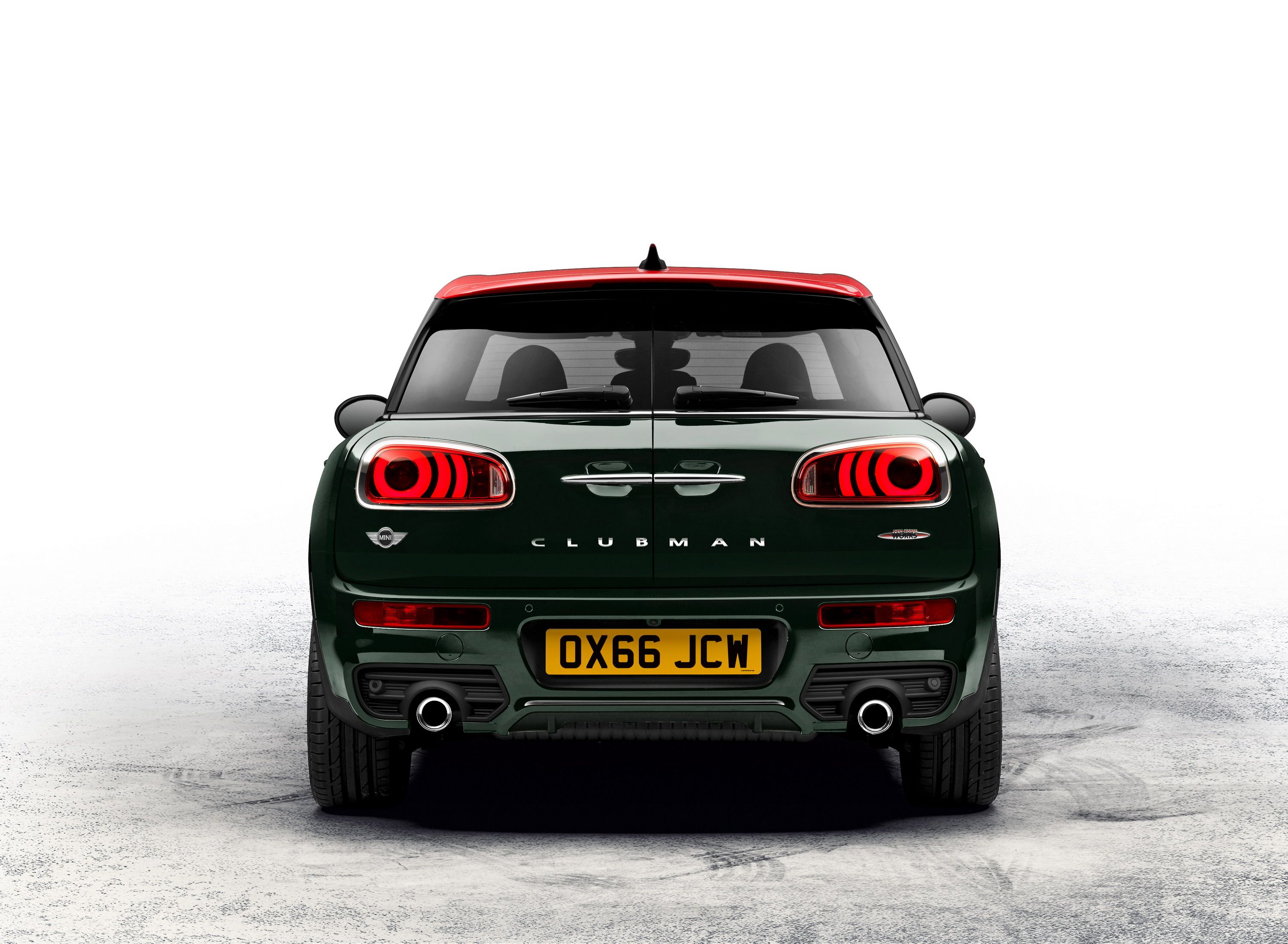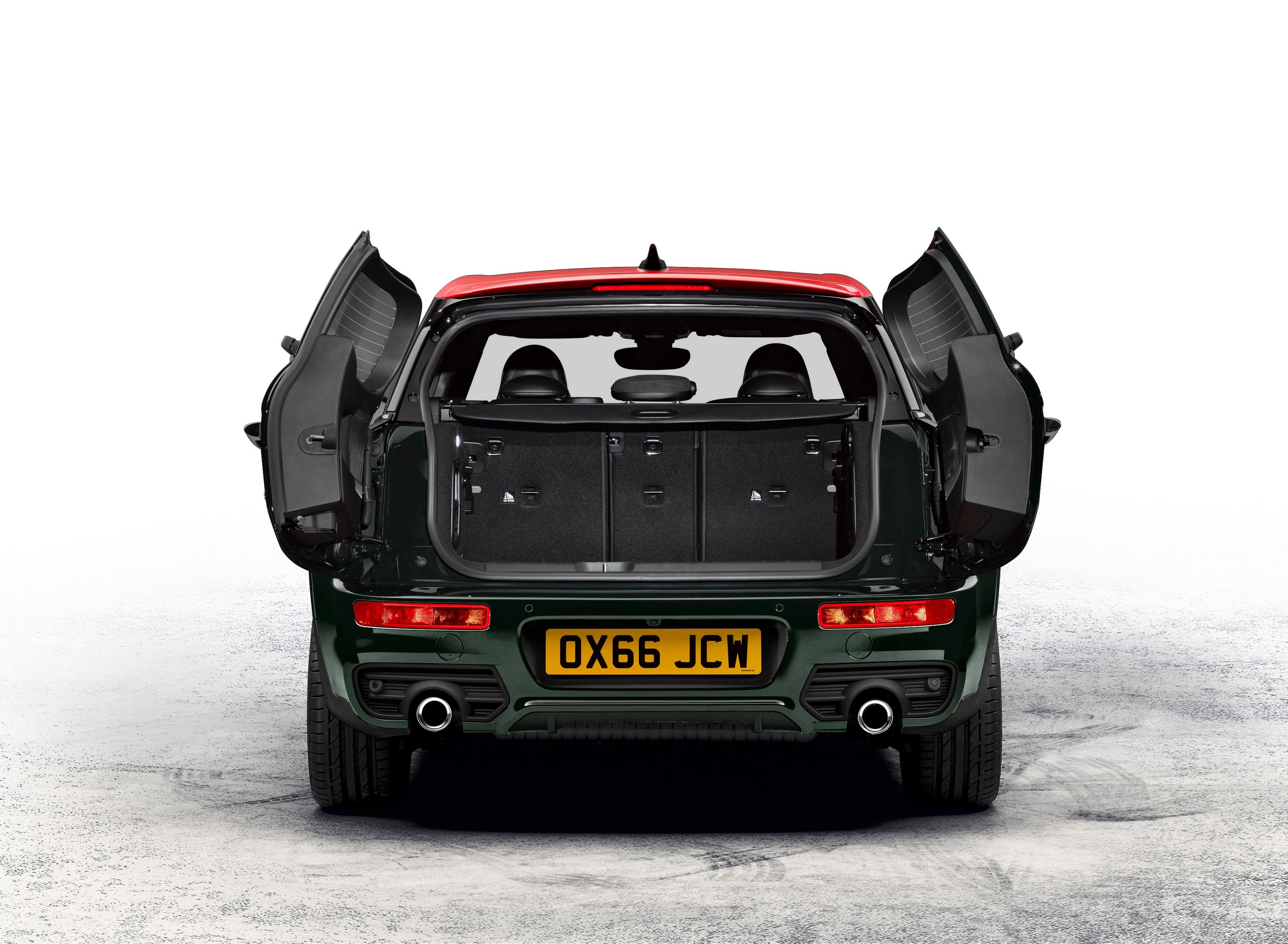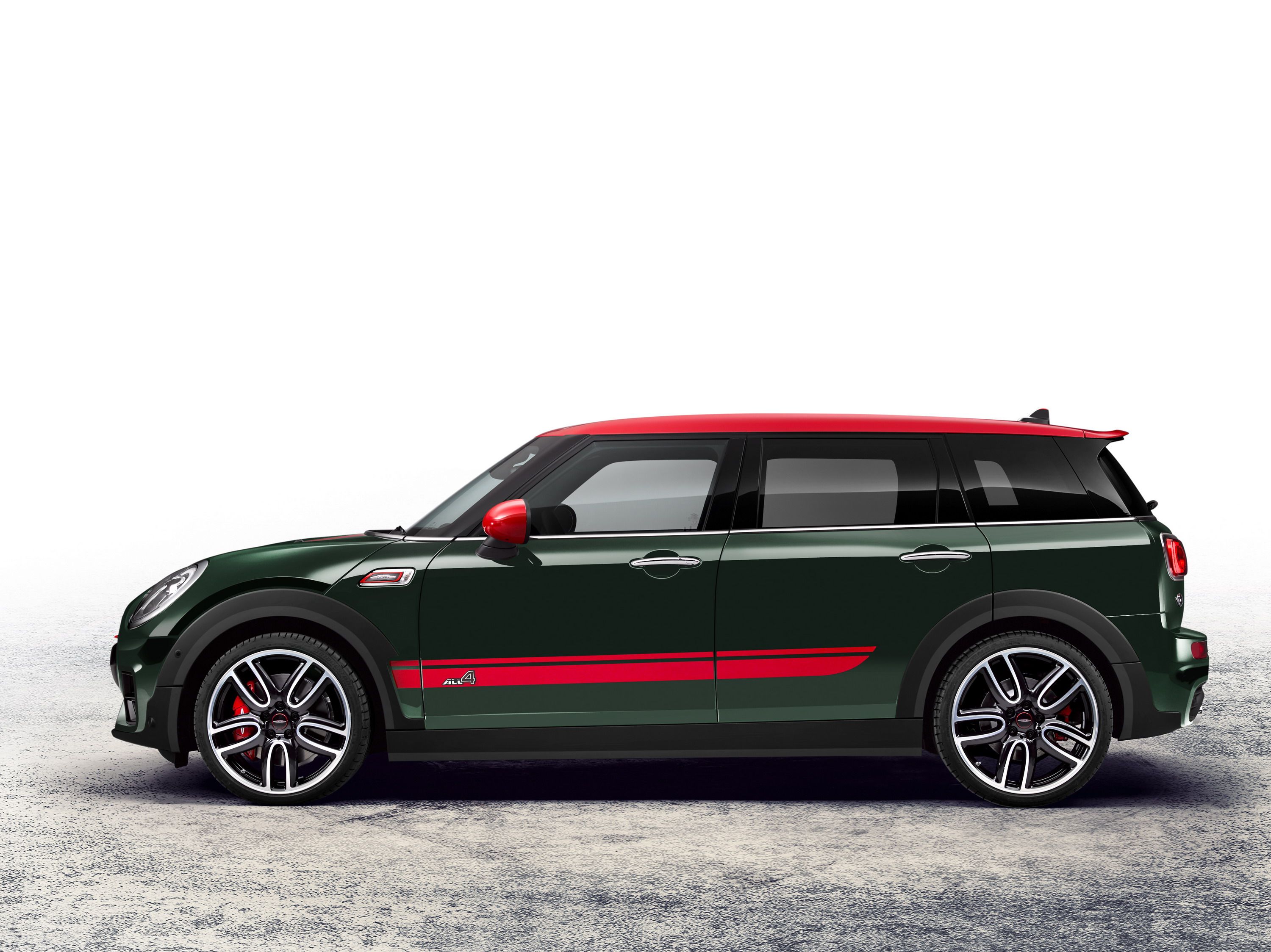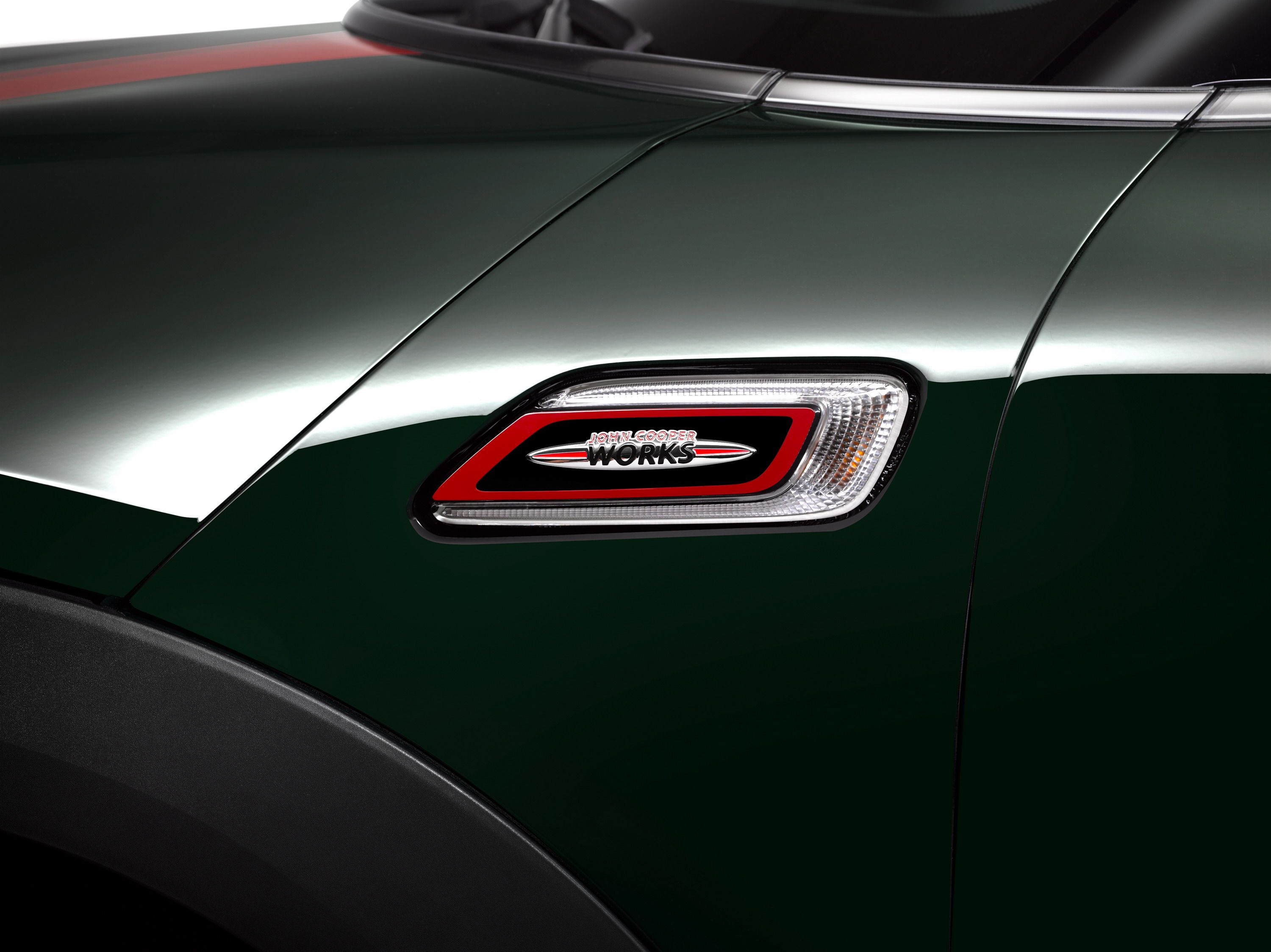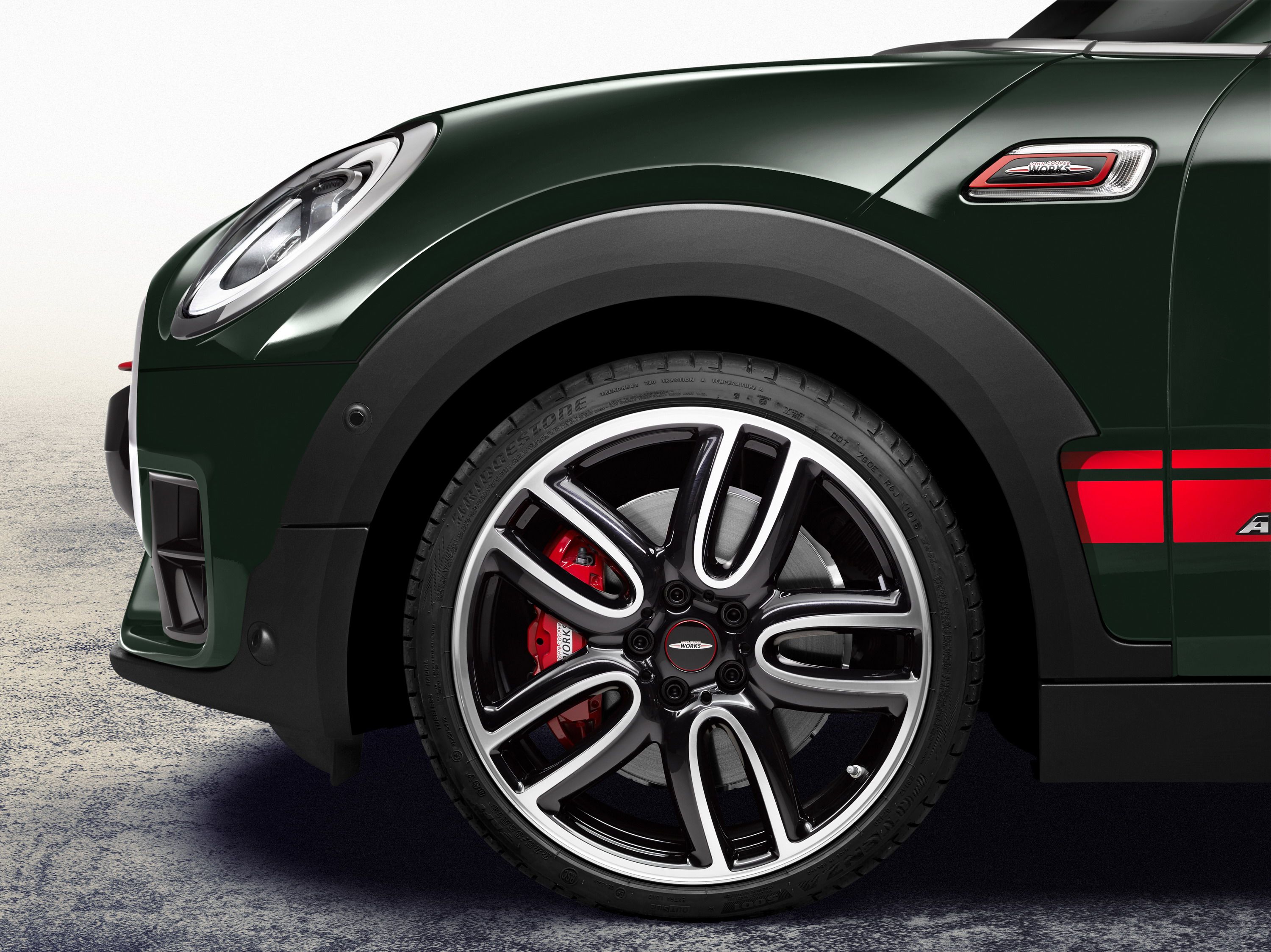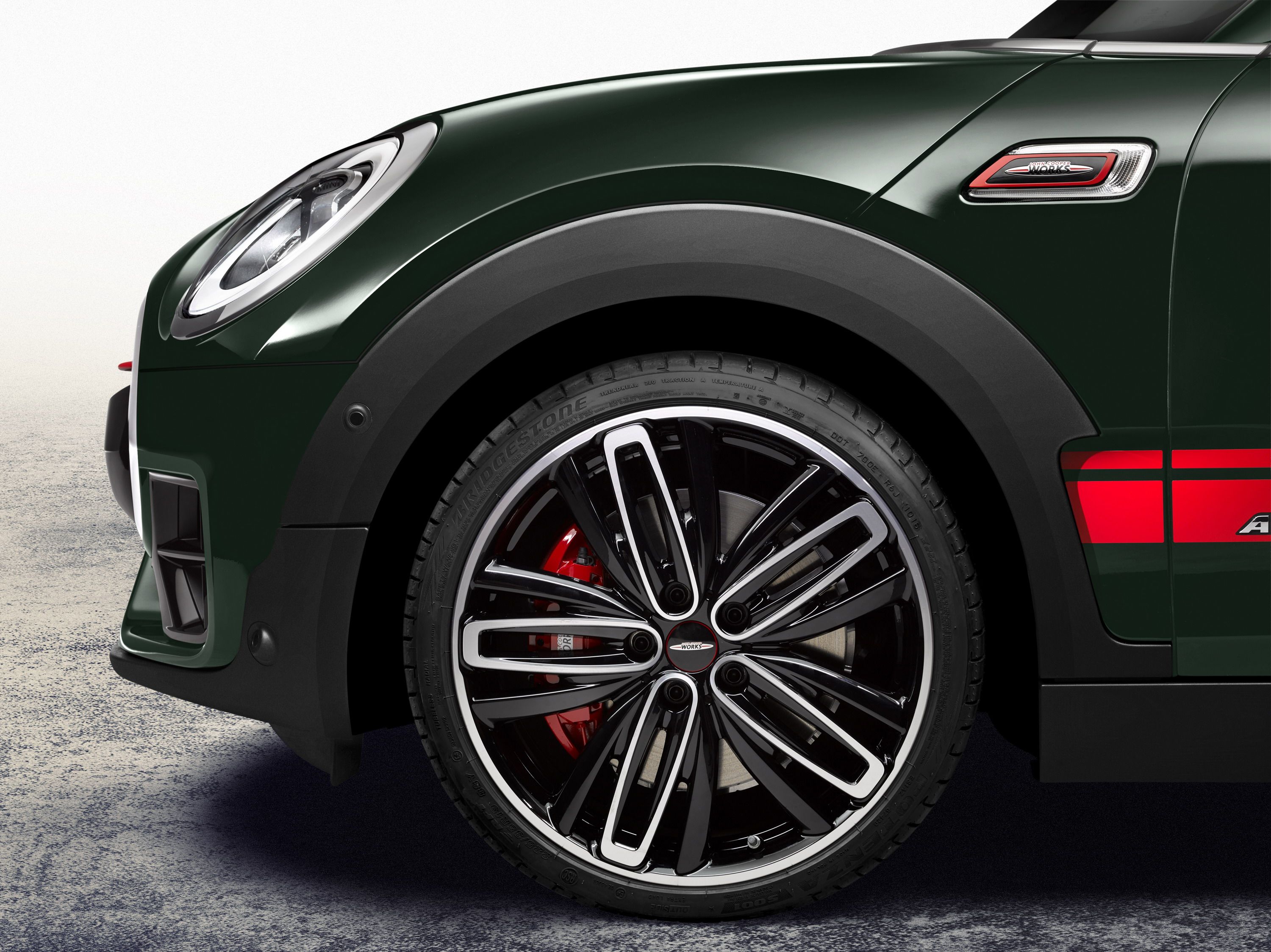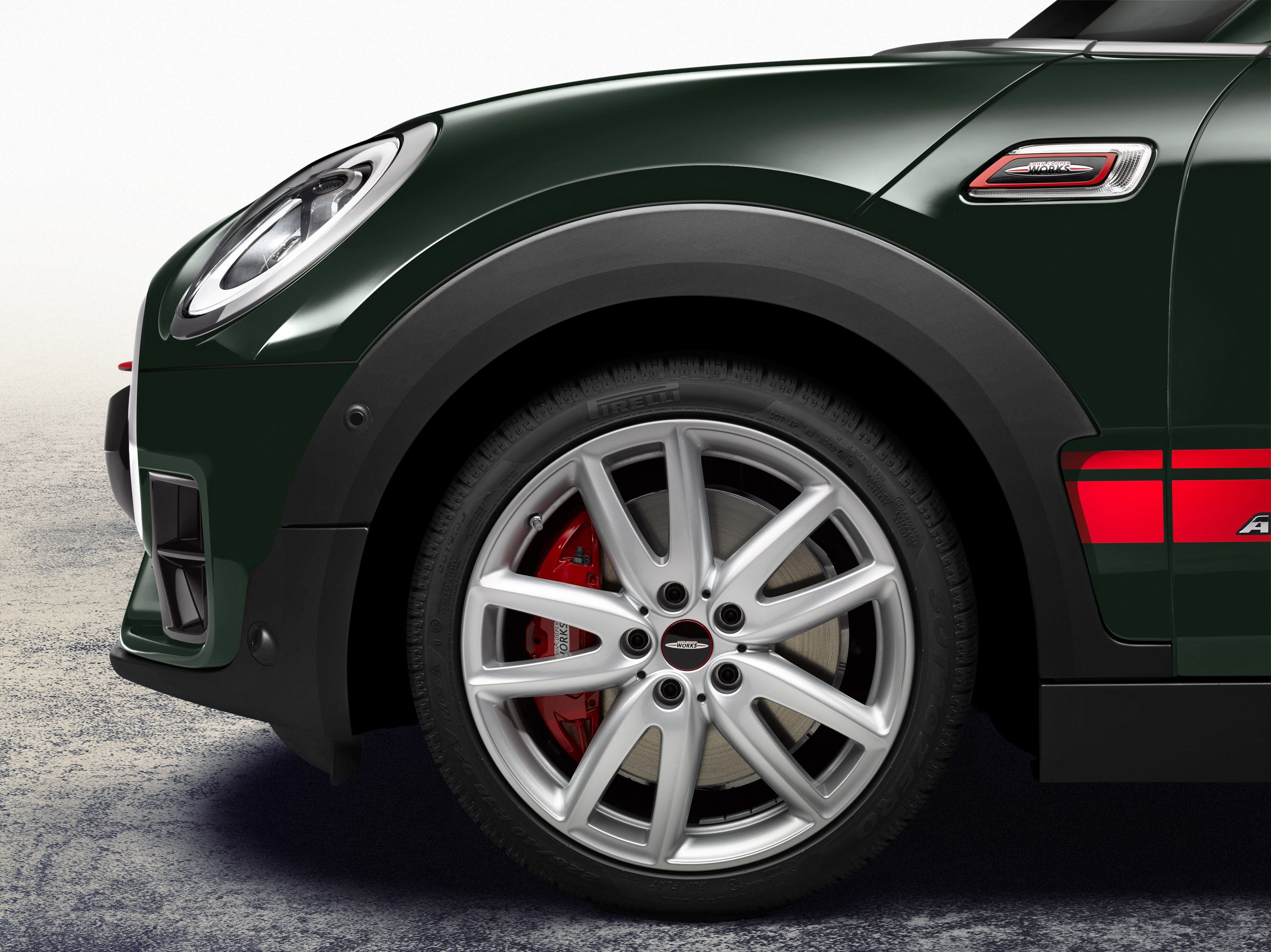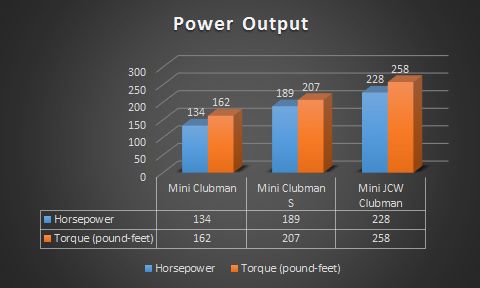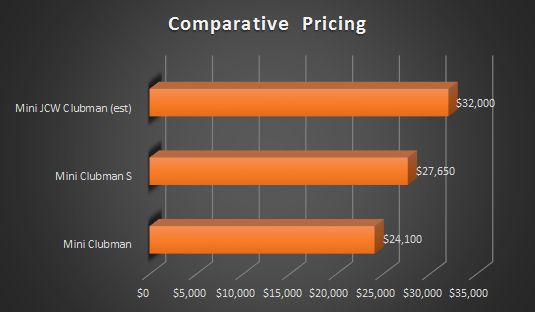Mini showed off its new design language in the 2014 Mini Cooper, and since then, Mini brought us a four-door version of the hatch and revamped the Mini Countryman. Then in late 2015, Mini finally pulled out all of the stops and offered the next-gen Mini Clubman for the 2016 model year. The biggest change came in the size department as the Clubman is now 12.4-inches longer and 4.6-inches wider than before. Other styling changes include things like larger headlamps and fog lamps, new taillights, and exhaust pipes that are integrated into the rear bumper. At launch the Clubman was offered with a 1.5-liter three-cylinder or a 2.0-liter four-banger in the Clubman S. The latter offered 189 horsepower and a 6.9-second sprint to 60 mph. That’s great and all, but there was still room for something better, and Mini has finally made it happen with the new John Cooper Works Clubman.
Powered by a twin-turbo, 2.0-liter, the JCW Clubman delivers 228 horsepower and 258 pound-feet of torque which makes it the most powerful and torquiest production car that Mini has made to date. As is the usual case with JCW models, the new Clubman gets its own unique features like Black 18-inch wheels, performance seats, and tuned suspension. It also comes equipped with Mini’s latest iteration of the ALL4 all-wheel drive system to help keep things from getting squirrely during spirited driving or extreme maneuvers.
Thomas Felbermair, the VP or Mini of the Americas, said,” Performance and versatility are part of our DNA and our heritage so naturally there has always been a plan in place to bring the John Cooper Works variant to the Mini Clubman model. The addition of the John Cooper Works design and performance enhancements and the new ALL4 all-wheel drive system to the already versatile Mini Clubman model we have once again raised the bar in the premium compact segment.”
With that said, let’s dive on in a take a look at all the finer details of the Mini JCW Clubman.
Continue reading to learn more about the Mini John Cooper Works Clubman.
2017 Mini John Cooper Works Clubman
- Make: Array
- Model: 2017 Mini John Cooper Works Clubman
- Horsepower: 228
- Torque: 258
- [do not use] Vehicle Model: Array
Exterior
Compared to the standard Clubman, there really isn’t a whole lot that’s different about the JCW model on the outside. It does sport a different front fascia that includes an unobstructed and slightly wider air dam. The air intake on each corner of the front fascia is also larger, but these do come at a cost as the JCW model doesn’t have room for fog lights. The smaller air intake that sits on either side of the air dam has also been redesigned and is a bit smaller in comparison to that of the standard Clubman. A red stripe runs the width of the radiator grille, replacing the chrome strip of the standard model, and it wouldn’t be a JCW model without the JCW badge on the radiator grille.
The side profile takes even fewer changes outside of the car's livery. The model you see here is finished in black, but the hood and sides have red accenting stripes. The roof as also been painted red as have the mirrors and brake calipers. The accent work done on this JCW Clubman is exquisite, and it’s just the right mix of black and red – two colors that naturally seem to go together. Looking at the side, it looks like the JCW Clubman may sit about a half-inch lower than the standard model (if so, it’s thanks to that tuned sports suspension.) the side profile is rounded off by that set of sexy, 18-inch JCW Grip Spoke Wheels.
To the rear, the big news really comes in the form of a new fascia. It’s not quite as aggressive as I would have liked, however, it somehow ties the whole vehicle together quite nicely. Instead of having that body cladding insert on the rear fascia, the JCW Clubman has a full rear fascia. The chrome exhaust tip on each corner is surrounded by an insert with two horizontal louvers that look similar to that of the air intakes up front. There’s also a chrome strip just below the license plate that matches the trim around the beltline and the rear taillights. The only red accents here are on the small overhang above the rear doors (matches the roof) and the red inside the JCW badge on the right door. All told, the car has just the right mix of black, red, and chrome, and it's strangely attractive to me, even though I’m someone who generally isn’t a fan of Mini’s styling most of the time.
Interior
Inside, there isn’t really a whole lot to talk about, but there are a few things to cover. First, the interior takes on the same color scheme as the exterior with lots of black and just the right doses of red in all the right places. The standard interior seats have been swapped out with JCW performance sport seats that have integrated head rests. Mini didn’t disclose what type of material is used for the seats on this model, but it looks like part of the seat is done up in leather while the center seat inserts are wrapped in black Alcantara. The seats feature red accents on each side, with those accents integrated into the headrests of the front seats.
The carpeting and door panels are also black, but the door trim panels have those integrated LED strips that change color with the ambient lighting of the rest of the vehicle. Colors shown here include a combination of green and red, red and black, and blue and red. It might seem like something that is unnecessary to some, but it’s these kinds of features that really stand out to car enthusiasts and can be the driving force behind which model a customer ultimately chooses before they sign their name on the dotted line. If you’re interested in learning more about some of the features found inside the car, you can check out the full review of the standard Clubman here.
Drivetrain
And we finally make it to the section that gets every gearhead’s blood pumping. The JCW Clubman is motivated by a retuned version of Mini’s 2.0-liter, twin-turbo, four-cylinder. This specific model is actually the most powerful production Mini ever made with 228 horsepower and 258 pound-feet of torque on tap. This is a pretty noteworthy improvement over the standard Clubman which comes with 134 horsepower and 162 pound-feet in entry-level form or 189 horsepower and 207 pound-feet in S form. Mini hasn’t gone into too much detail as to how it achieved an increase of 39 horsepower and 51 pound-feet of the Clubman S, but part of that gain can be attributed to the JCW sport exhaust system. It’s also safe to assume that some of that power came from software tuning and increase turbo pressure.
All this power is sent to the wheels via a six-speed manual transmission, but an eight-speed Steptronic sports transmission is optional. The ALL4 all-wheel-drive system comes standard and is constantly monitoring road conditions and speed of each wheel. When conditions warrant torque delivery to the front wheels, the system kicks in and delivers a portion of the engine's torque to the front wheels. This model also comes with a Launch Control Function to ensure quick get-up off the line without excessive tire spin. All told, this Clubman can hit the 60-mph sprint in six seconds regardless of your transmission choice. Top speed is currently a mystery, but it’s safe to assume that it’s higher than the estimate 142 mph top speed of the Clubman S.
Helping to keep all four wheels road-side down is the John Cooper Works Sport Suspension that brings a ride height drop of 0.4-inches over that of the standard Clubman. This helps to lower the center of gravity while enhancing the overall handling and aerodynamic characteristics that help to make this Clubman the dominant member of the family. On top of that, the lower ride height gives the Clubman a much sportier stance to go with that awesome red and black color scheme. Braking duties are handled by a Brembo sport brake system up front that includes four-pot fixed calipers.
Pricing
For now, pricing will remain a mystery with Mini planning to announce pricing sometime in the near future. The car will land on showroom floors starting in December of 2016, so the wait for pricing figures won’t be that long. Mini’s current pricing structure normally puts JCW models at a premium of about $5,000 over that of the range-topping non-JCW model. So, with the entry-level Clubman starting out at $24,100 and the Clubman S starting at $27,650, we expect the JCW Clubman to command somewhere around $32,000.
Competition
Fiat 500X Abarth
Mini car’s really stand in a niche all their own as far as I’m concerned. But, the Fiat 500X Abarth is probably the closest competitor that you can get, but the 500X Abarth isn’t exactly here yet. We know that Fiat is working on it, as we’ve caught it testing in the wild back in February of 2016 with almost no camo whatsoever, dual exhaust pipes, and some really sporty wheels. Rumor has it that the 500X Abarth will be powered by the same 1.75-liter four-banger found in the Alfa Romeo 4C, which would give it an output of something like 237 horsepower and 258 pound-feet of torque. That would give the 500X Abarth a 60-second sprint of around six seconds and a top speed close to 150 mph. When Fiat finally releases this beefed up 500X, it’s expected to pull about $31,000. Clearly, it will be a strong competitor when it does hit showrooms, and with the JCW Clubman hitting showrooms soon, you can bet we’ll see the 500X Abarth sooner than later.
Read our full review on the here.
Conclusion
Maybe it’s the German in me, but I’ve never really been a big fan of the Mini Cooper. But, the Clubman is a bit larger, and it really started to rub me the right way in 2016 when it came out much larger than before. As a self-proclaimed gearhead, I tend to favor cars with a lot more power than some measly 228 ponies, but you have to respect the fact that the new JCW Clubman is the most powerful production Mini ever made. On top of that, for a smaller vehicle, a six-second sprint to 60 mph is pretty damn good. This is one of those cars I would love to get my hands on, play around with some software tuning, and do a few of my own mechanical upgrades. Something tells me that there is a lot of potential for tuning this model, and I’m looking forward to seeing what comes from the JCW Clubman in the future. What do you think about this model? Is it worth all the hype or would you have liked to see something more out of it? Let us know in the comments section below.

